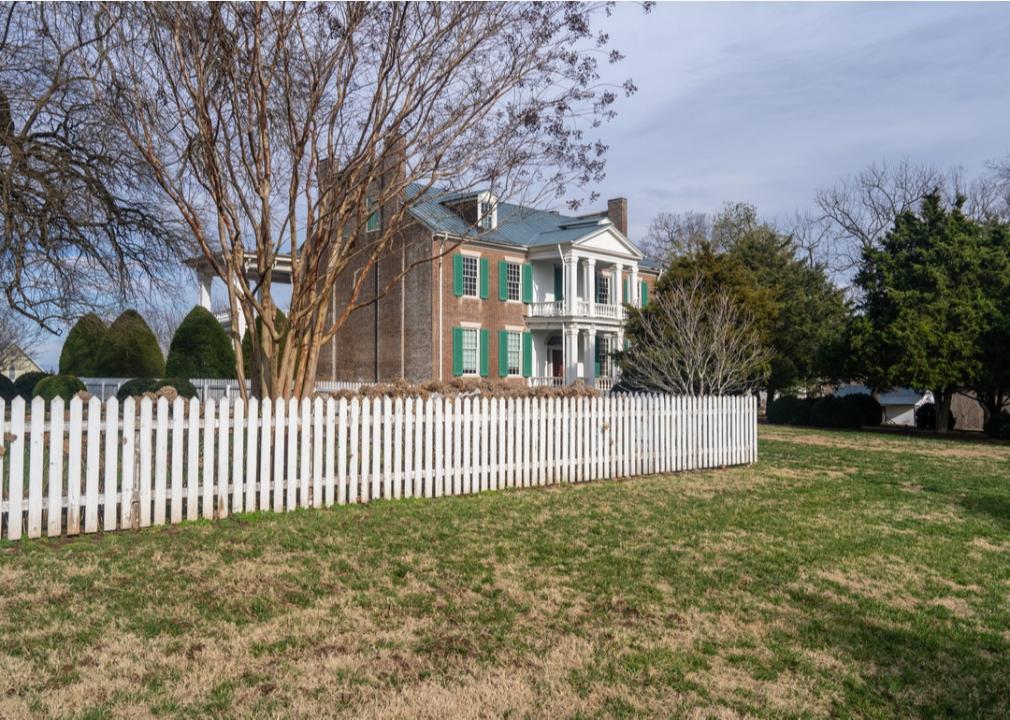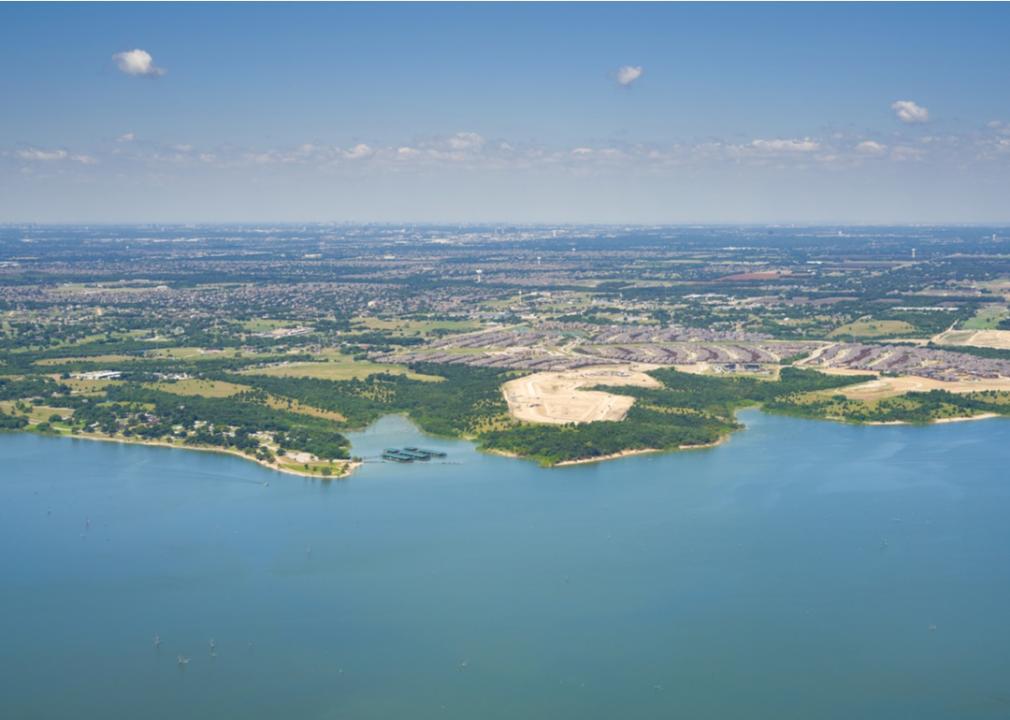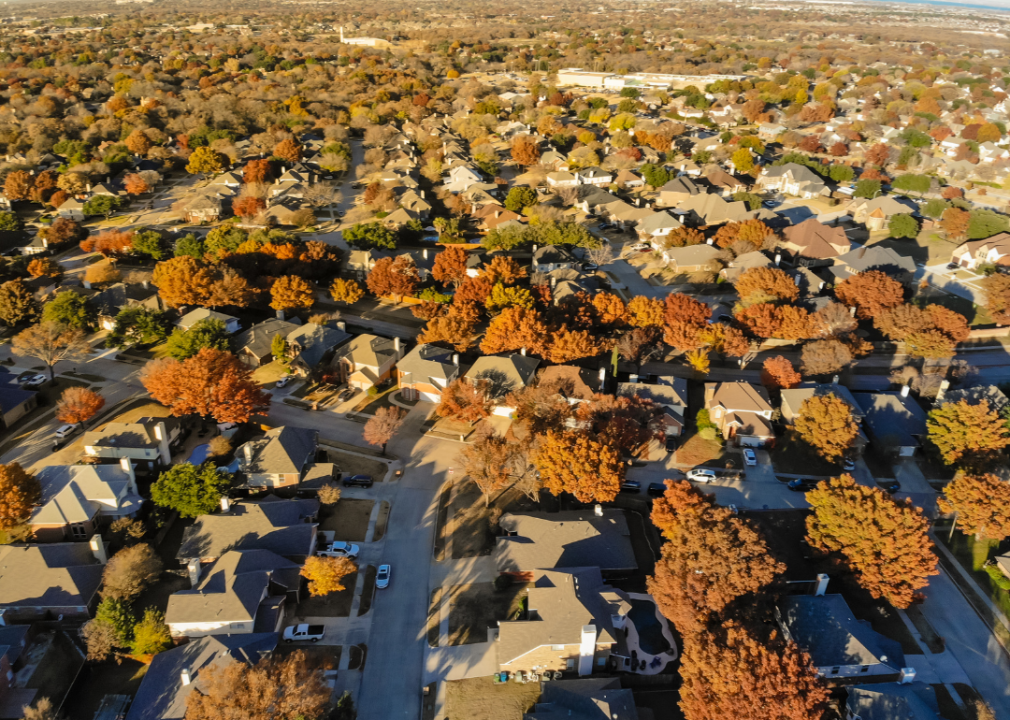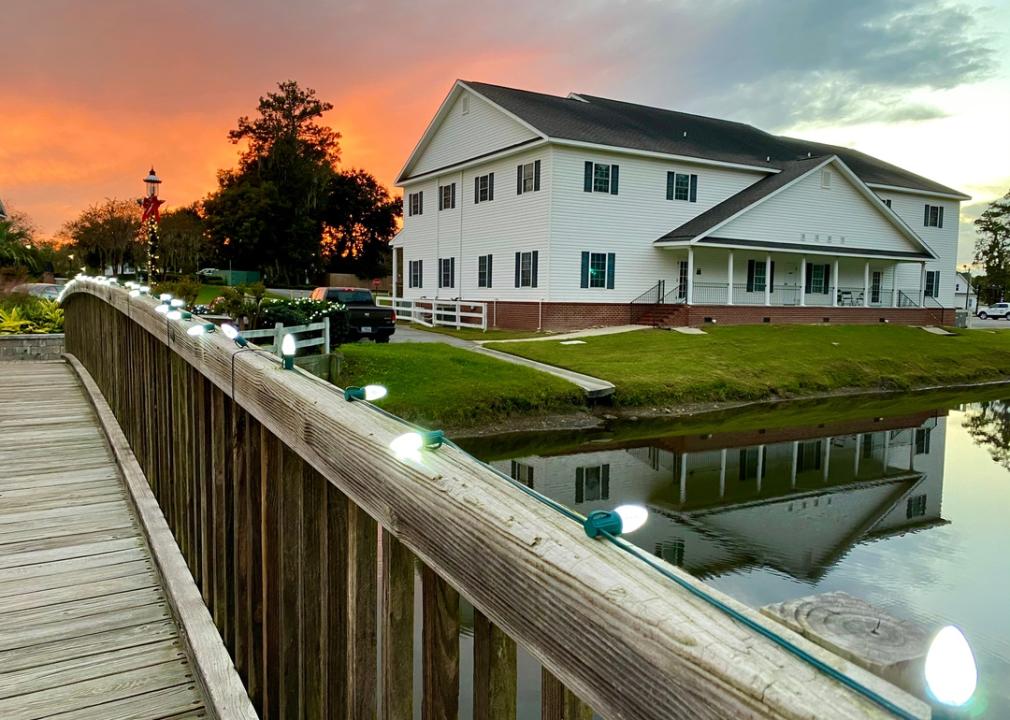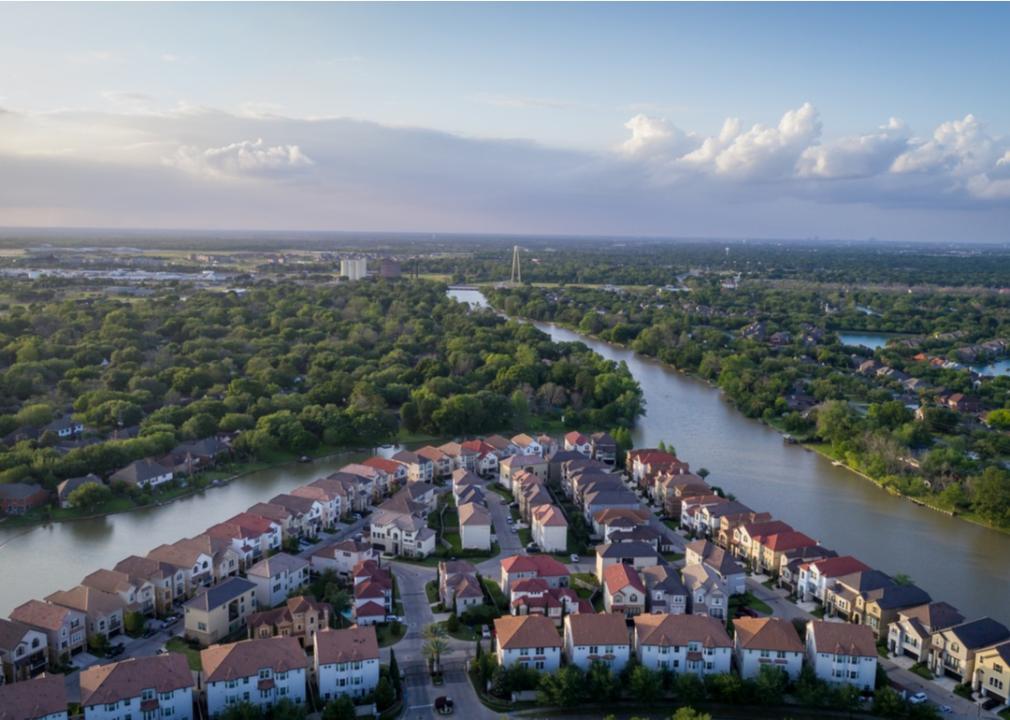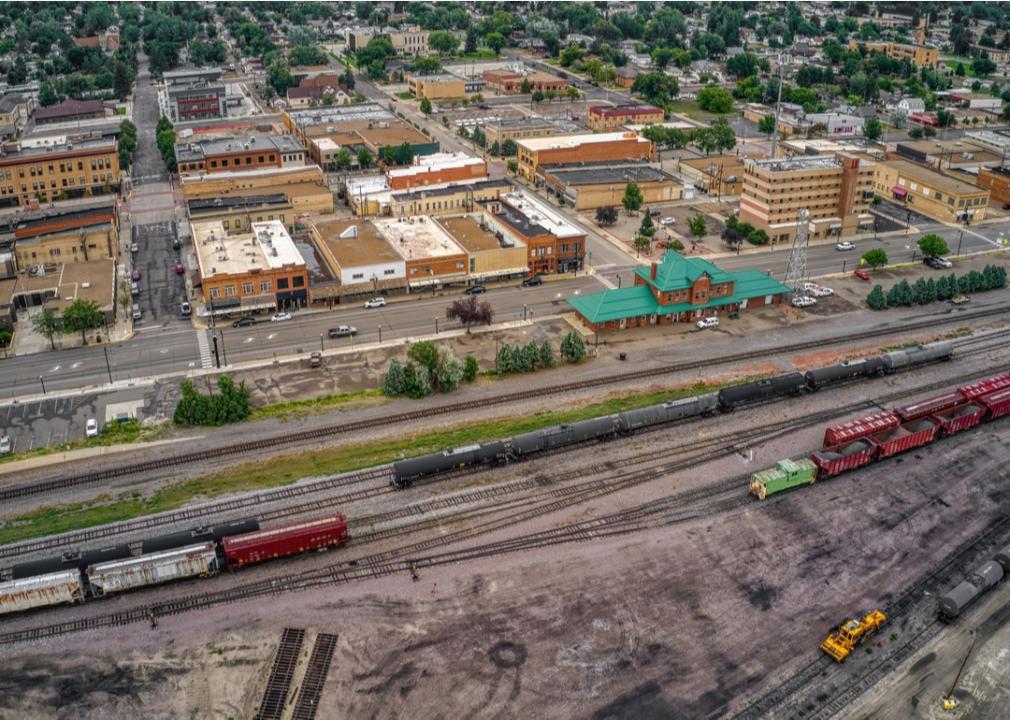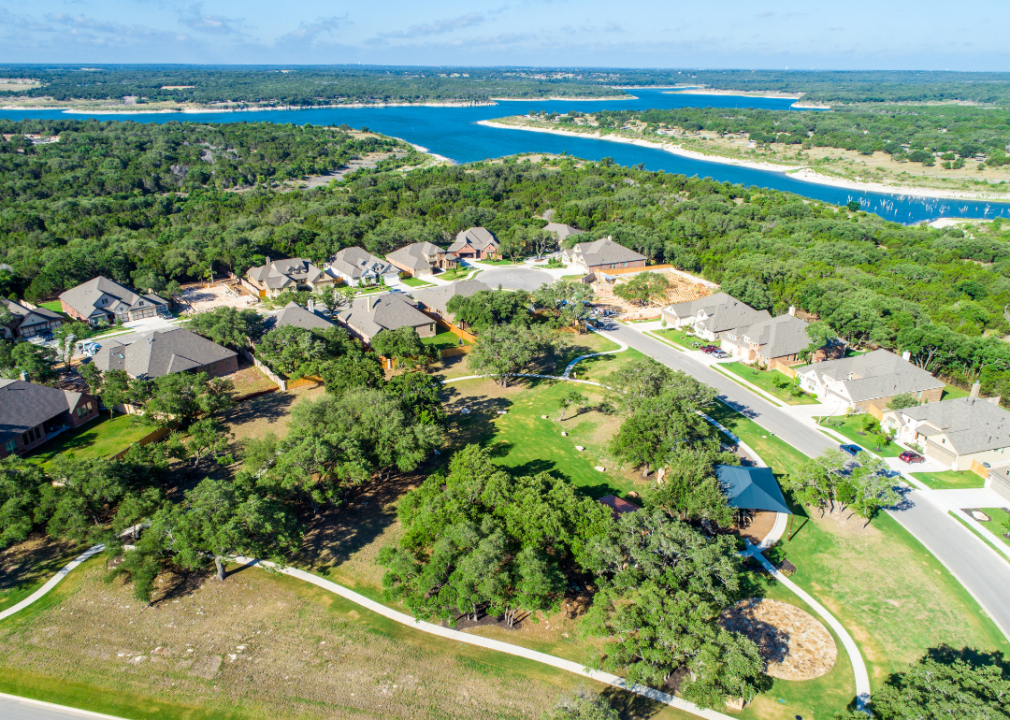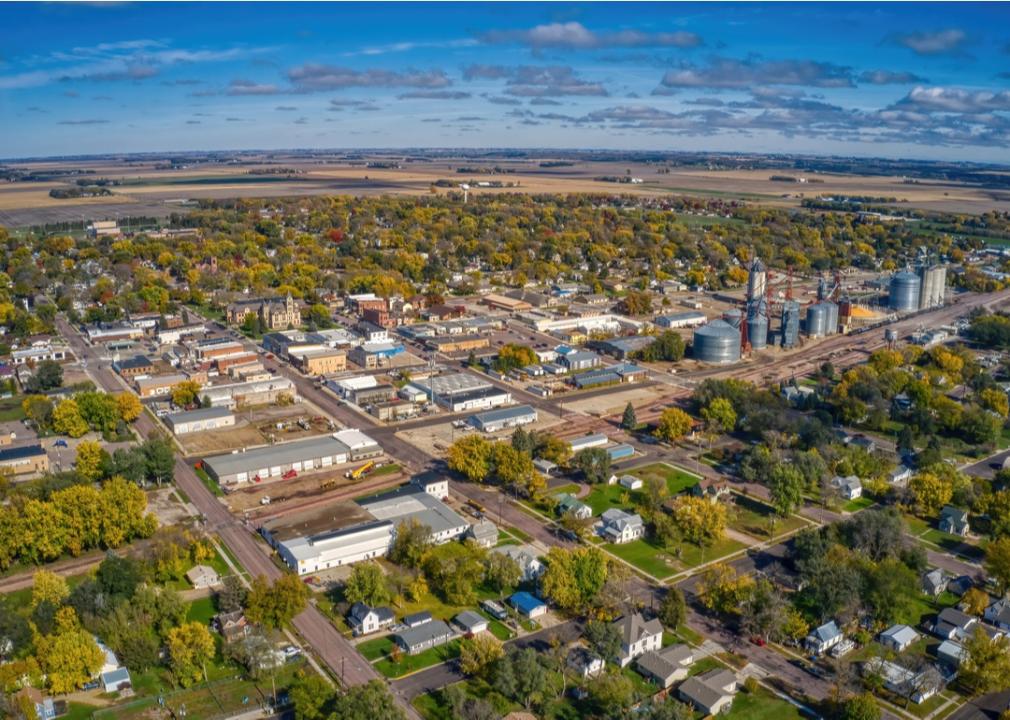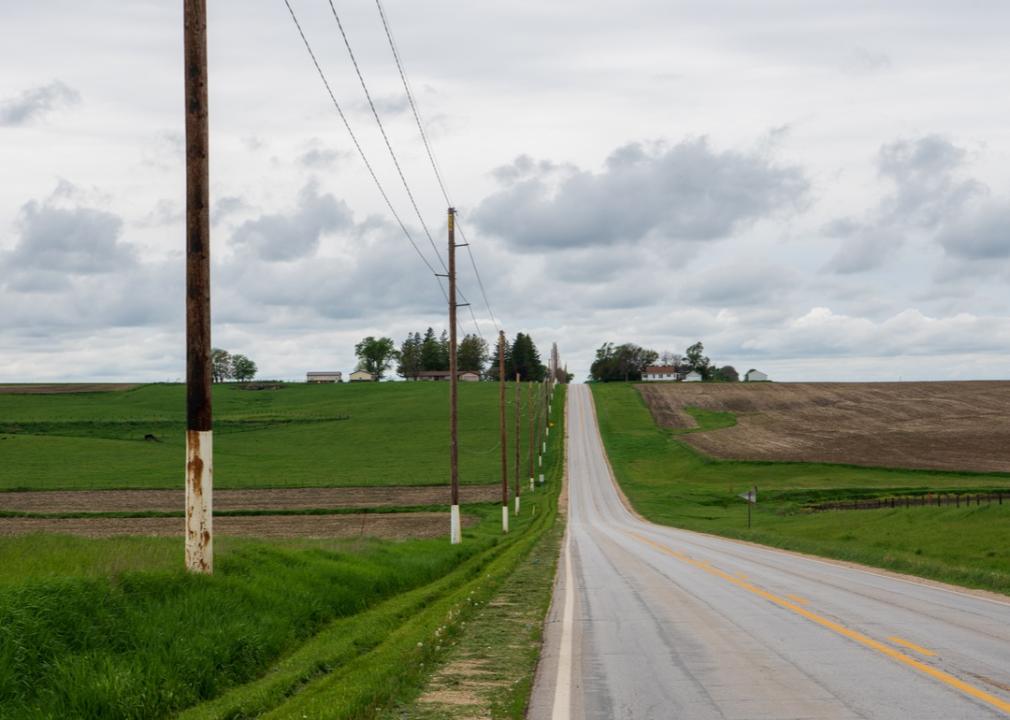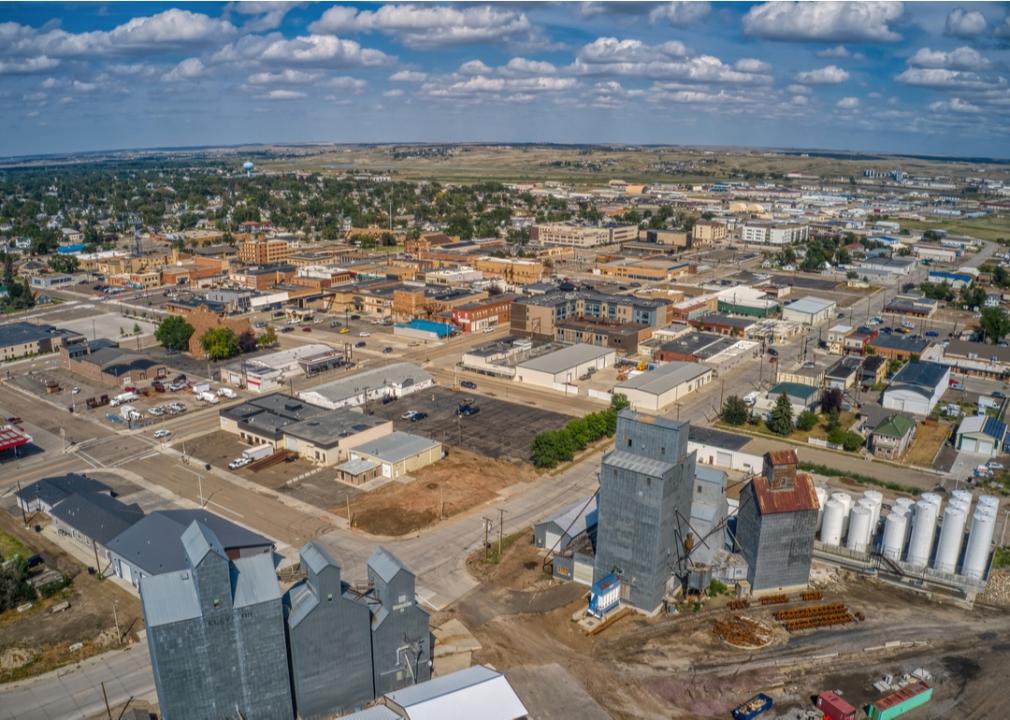Counties that have seen the biggest growth in housing over the last decade
Canva
Counties that have seen the biggest growth in housing over the last decade
For the last couple of years, headlines about the housing market have dominated the news cycles. From housing shortages to sky-high home prices, we’ve all heard about how the pandemic has affected nearly every housing market across the nation. Many of us have experienced the phenomenon firsthand. But while the pandemic has certainly had an impact on the housing market, there are plenty of other factors that have spurred housing growth in counties across the nation—and these factors aren’t as widely discussed.
Take, for example, the massive impact the oil boom has had on housing in the Midwest. Between 2007 and 2012, employment in North Dakota’s oil and gas industry increased by 354%, resulting in a 19% population growth in western North Dakota alone. As oil companies—and oilfield employees—continue to move in, sleepy towns and counties have been upended by the sudden influx of residents. While more jobs may boost the economy, the rapid growth can also leave cities struggling to keep up with demands for health services, roads, transportation, and housing.
In other areas of the nation, rapid rates of housing growth have other catalysts, including urban sprawl and economic growth. And, in rare cases, growth can even be caused by an unprecedented influx of retirees relocating to the area. The only consistent factor across these counties is that the subsequent housing growth has had a big impact on the housing market.
So which counties have seen the biggest housing growth over the last decade—and why? Better Mortgage, an online lender and homeownership platform with a free mortgage calculator, used data from the U.S. Census Bureau’s decennial census to calculate which counties have seen the greatest increase in housing units over the last 10 years. The counties are ranked according to the percent change in housing units between 2010-2020, and the top 20 counties with the biggest growth in housing were selected for this story. Census data on housing was released on August 12, 2021 for all counties in America. Here’s what you should know.
![]()
Mariusz S. Jurgielewicz // Shutterstock
#20. Williamson County, Tennessee
– Change in housing units (2010–2020): 22,635 (+33.0% since 2010)
– Housing units in 2020: 91,133
Williamson County, Tennessee, which flanks the city of Nashville to the southwest, has seen explosive home growth over the last 10 years—and it’s due in major part to a high concentration of wealth in the area. As of 2019, Williamson County was the only county in Tennessee to have a median household income of over $75,000—and the only county in the state to have a poverty rate below 5%. In other words, there has been plenty of money in this county to support the purchases of homes over the last decade, and new residents have continued to pour into the area, keeping demand for housing high—but also pushing home prices higher and higher in tandem.
Canva
#19. Kaufman County, Texas
– Change in housing units (2010–2020): 12,906 (+33.7% since 2010)
– Housing units (2020): 51,228
– Housing units (2010): 38,322
The small Texas county of Kaufman is located in the Dallas-Fort Worth metro area, and that alone has had a huge impact on its housing demand. The DFW metro has seen a huge growth in population over the last 10 years, and as the inner-city housing inventory has been depleted, residents have turned to more suburban and family-friendly areas like Kaufman to find homes. Consequently, several developers have turned their focus to building master-planned communities in Kaufman County, where land is plentiful and demand for new homes is high. Other draws, like Kaufman County being ranked one of the best counties in the nation for families and young professionals, have kept home vacancy rates low, despite thousands of new homes being built there over the last decade.
K I Photography // Shutterstock
#18. Collin County, Texas
– Change in housing units (2010–2020): 102,521 (+34.1% since 2010)
– Housing units (2020): 403,481
– Housing units (2010): 300,960
Like Kaufman, Collin County, Texas, is part of the Dallas-Fort Worth metro area, and many of the same factors impacting Kaufman have caused home growth in this area over the last decade, as well. Thanks to its prime location near Dallas, Collin County has had a 36% increase in population since 2010. And with higher population numbers comes a need for more housing—which is one part of why Collin County has had such massive growth in housing in recent years. Families looking for single-family homes have set their sights on this area, and developers have delivered en masse. Plus, unlike areas within Dallas proper, there’s plenty of land to develop in Collin County, which makes it prime for the addition of new neighborhoods.
Sonja Botes // Shutterstock
#17. Montgomery County, Texas
– Change in housing units (2010–2020): 60,842 (+34.2% since 2010)
– Housing units (2020): 238,489
– Housing units (2010): 177,647
Montgomery County, Texas, is part of the Houston-Woodlands-Sugar Land metro area, and as the city of Houston has exploded in growth, so has this county just north of the city, spiking 36.1% since 2010. One of the reasons for this growth is that there is plenty of undeveloped land in Montgomery County, which has allowed developers to erect a number of massive master-planned communities that cater to families and young professionals. Another housing growth driver is that the economy is thriving in areas like The Woodlands, which is home to numerous global companies, including Chevron Phillips Chemical, Anadarko Petroleum, and Baker Hughes, all of which attract professionals in need of housing.
Canva
#16. Denton County, Texas
– Change in housing units (2010–2020): 92,136 (+36.0% since 2010)
– Housing units (2020): 348,275
– Housing units (2010): 256,139
Denton County, Texas, which is located about an hour northwest from the city of Dallas, has been booming in nearly every area of growth over the last decade. As part of the Dallas-Fort Worth metro region, Denton County has become a hotspot for job seekers looking to work outside of the city, and there are employment opportunities in numerous industries ready to accommodate them—for example, Sally Beauty and Peterbilt Motors are headquartered there. The city of Denton is also home to the University of North Texas, putting housing at a premium (and in high demand). Luckily, there is plenty of available land in Denton County and over the last decade, developers have steadily added new housing to the county to accommodate all of the rapid growth.
Canva
#15. Wasatch County, Utah
– Change in housing units (2010–2020): 3,885 (+36.7% since 2010)
– Housing units (2020): 14,462
– Housing units (2010): 10,577
Micropolitan communities—towns with populations of 10,000 to 50,000 residents—have exploded in popularity, which is a large part of why there’s been massive housing growth in Wasatch County, Utah, over the last decade. As more people sought to relocate to small towns with big amenities, Heber Valley in Wasatch County became the top micropolitan landing spot in the nation. Its close proximity to Salt Lake City, Sundance, and other popular locales has helped to keep new residents pouring into this county as well. In turn, housing developments have been built to accommodate the influx of residents—and even more developments are in the works.
Canva
#14. Forsyth County, Georgia
– Change in housing units (2010–2020): 23,529 (+36.7% since 2010)
– Housing units (2020): 87,581
– Housing units (2010): 64,052
Swathes of new residents have moved to Forsyth County, Georgia, over the last 10 years—and the area’s close proximity to Atlanta and the Blue Ridge Mountains has been a big draw. The county grew by over 43% from 2010 to 2020, and as of late 2021, Forsyth was the fastest-growing county in metro Atlanta. With more residents comes the need for more housing, which is a major factor for the significant housing growth in Forsyth County over the last decade. Developers have had to build more housing to accommodate the nearly 50% growth in population, but the rate of vacancy has stayed low—so it’s likely that more new housing will be added in the future, too.
Alissala // Shutterstock
#13. Rockwall County, Texas
– Change in housing units (2010–2020): 10,280 (+36.8% since 2010)
– Housing units (2020): 38,219
– Housing units (2010): 27,939
The North Texas county of Rockwall is another DFW metro county that has seen explosive growth over the last decade, and as with counties like Denton and Kaufman, it’s due in large part to Dallas’ rapid growth. As more and more residents searched outside of Dallas proper for affordable and family-friendly housing, small counties like Rockwall became prime targets. That caused the population in Rockwall to grow by nearly 21% from 2010 to 2020, spurring the demand for more housing. The fact that Rockwall County offered plenty of land to develop properties also drove the rise in housing over the last decade—and continues to do so even now.
Canva
#12. Broomfield County, Colorado
– Change in housing units (2010–2020): 8,652 (+38.2% since 2010)
– Housing units (2020): 31,298
– Housing units (2010): 22,646
Over the last decade, housing in the city of Denver has become extremely expensive and extremely limited, which has significantly impacted other areas in the metro, including Broomfield County. From 2010 to 2020, Broomfield County’s population increased by a whopping 32.6% as new residents flocked to the Rocky Mountains. In turn, the housing inventory in Broomfield County exploded as more new developments were built to accommodate the growth in population. Other factors, like Broomfield County’s thriving economy attracting more and more job seekers to the area, have added to the rapid population and housing growth.
Kevin Chen Images // Shutterstock
#11. Bryan County, Georgia
– Change in housing units (2010–2020): 4,861 (+41.0% since 2010)
– Housing units (2020): 16,703
– Housing units (2010): 11,842
Bryan County was the fastest-growing county in Georgia over the last decade, and it had a big impact on the area’s rate of housing growth. As part of the Savannah metro area, Bryan County has a thriving economy that attracts new residents and job seekers to the area in droves, which has led to the ongoing need for more housing. Bryan County is also home to the nation’s fastest-growing container port—the Port of Savannah—which is one of the state’s largest public employers. Other factors, such as a focus on building high-end residential developments, have added even more housing inventory to the mix, but the area maintains a low vacancy rate despite all of the new developments.
Kamil Zelezik // Shutterstock
#10. Fort Bend County, Texas
– Change in housing units (2010–2020): 80,880 (+41.0% since 2010)
– Housing units (2020): 277,910
– Housing units (2010): 197,030
As part of the Houston metro area, Fort Bend County has experienced massive growth over the last decade. As of 2020, Fort Bend County was one of the fastest-growing counties in Texas, due in major part to the expansion of the city of Houston into more suburban areas. As more residents poured in, more housing was needed to accommodate them—leading to huge numbers of new neighborhoods being built in Fort Bend County over the last 10 years. Commercial growth followed suit, which has played a large part in attracting residents to relocate to Fort Bend County for work. And it didn’t hurt that this one rural county had plenty of land to develop—unlike areas in inner-city Houston, which allowed for a more rapid expansion of housing in the area.
Canva
#9. Sumter County, Florida
– Change in housing units (2010–2020): 22,278 (+42.0% since 2010)
– Housing units (2020): 75,304
– Housing units (2010): 53,026
The population in Sumter County, Florida, grew rapidly over the last decade. Unlike other counties on this list, the growth in Sumter County has been skewed toward a much older demographic. A massive master-planned retirement community called The Villages has been a major draw for retirees, pushing the area’s population from about 93,000 residents in 2010 to about 130,000 in 2020. That development alone has contributed to the rapid growth of housing in this county over the last decade—and will likely continue to do so for the near future.
Jacob Boomsma // Shutterstock
#8. Stark County, North Dakota
– Change in housing units (2010–2020): 4,646 (+43.3% since 2010)
– Housing units (2020): 15,381
– Housing units (2010): 10,735
The oil industry has had a huge impact on the population in Stark County, North Dakota. Thanks to a wealth of oil resources, the local economy is booming—and jobs in the oil field are plentiful. From 2010 to 2020, the population in Stark County grew by over 20% as new residents poured into North Dakota for jobs in the high-paying field. In turn, more new housing was needed to accommodate all of the new residents. Developers met the challenge, building thousands of new housing units, which contributed to the massive growth in this county.
Canva
#7. Williamson County, Texas
– Change in housing units (2010–2020): 74,907 (+46.0% since 2010)
– Housing units (2020): 237,680
– Housing units (2010): 162,773
The city of Austin has grown by leaps and bounds over the last decade, and that growth has, in turn, spilled over to outlying counties. As part of the Austin-Round Rock-Georgetown metro, Williamson County—and the town of Georgetown in particular—has become a hotspot for residents looking to trade life in the expensive Austin city limits for more rural areas. As such, more and more housing has been added to accommodate the growing population. Georgetown—and all of Williamson County—is now flush with new home developments, and with such low vacancy rates, it’s likely even more will be added to the mix.
Jacob Boomsma // Shutterstock
#6. Lincoln County, South Dakota
– Change in housing units (2010–2020): 8,352 (+46.7% since 2010)
– Housing units (2020): 26,227
– Housing units (2010): 17,875
Lincoln County, South Dakota—which is home to the city of Sioux Falls—has experienced unprecedented growth over the last decade, and that growth is directly responsible for the amount of new housing that has been added in the area. A crucial reason for that growth is South Dakota’s extremely low tax levels, which have also helped the economy in Sioux Falls—and Lincoln County as a whole—to thrive. The affordable housing in the area has been another draw—but as residents have poured in, more housing has been needed, which is why there has been such substantial growth in Lincoln County over the last decade.
Dana Rasmussen // Shutterstock
#5. Comal County, Texas
– Change in housing units (2010–2020): 22,831 (+48.5% since 2010)
– Housing units (2020): 69,939
– Housing units (2010): 47,108
As part of the San Antonio-New Braunfels metro area, Comal County has seen expansive population growth since 2010. Over the last 10 years, residents from nearby cities like San Antonio and Austin have poured into Comal County in search of more affordable real estate and a more rural lifestyle. This has led to a crushing demand for housing, and the housing inventory in towns like New Braunfels has been depleted. There’s plenty of land to build on in Comal County, but developers have struggled to keep up. With the home prices still rising in Austin and the surrounding areas—and no room in the city for new developments—it’s likely that the trend will continue for at least a while longer.
Ralf Broskvar // Shutterstock
#4. Dallas County, Iowa
– Change in housing units (2010–2020): 13,865 (+50.9% since 2010)
– Housing units (2020): 41,125
– Housing units (2010): 27,260
Dallas County, Iowa, is home to Des Moines—a city that has experienced a huge population explosion over the last decade. Part of the reason for that growth is that Des Moines has become a hub for the insurance and finance industries, so there are plenty of jobs to attract new residents to the area. Moreover, a thriving agriculture industry coupled with a low cost of living has led to an uptick in demand for housing. In order to keep up with the population growth, Dallas County has added a ton of new housing to the mix over the last decade.
Silvio Ligutti // Shutterstock
#3. Hays County, Texas
– Change in housing units (2010–2020): 34,117 (+57.4% since 2010)
– Housing units (2020): 93,534
– Housing units (2010): 59,417
Hays County, Texas, is part of the Austin-Round Rock metro area—and as with other counties in this metro, it has experienced unprecedented growth over the last decade. In fact, Hays County was the fastest-growing county in the county, according to the latest Census data. That growth is due in large part to housing in Austin pricing out new and longtime residents. As home prices within the Austin city limits have increased, residents have turned to areas like Hays County for more affordable options. In turn, the existing housing inventory has been depleted, which has led home developers to try and keep up with the demand. Other factors, including companies such as Amazon putting down footprints in the area, have only added to the need for more housing.
Jacob Boomsma // Shutterstock
#2. Williams County, North Dakota
– Change in housing units (2010–2020): 9,763 (+93.3% since 2010)
– Housing units (2020): 20,227
– Housing units (2010): 10,464
Like other areas of North Dakota, Williams County has seen phenomenal growth in population since 2010, largely due to an explosion in oil industry jobs in the area, which has lured new residents with high-paying work opportunities. Prior to the oil boom, housing demand was limited in sleepy Williams County, but new residents flocking in for work have led to a huge uptick in housing inventory. However, oilfield work tends to be transient as workers come and go on a regular basis. This has caused a higher home vacancy rate than normal in this county.
Canva
#1. McKenzie County, North Dakota
– Change in housing units (2010–2020): 4,571 (+147.9% since 2010)
– Housing units (2020): 7,661
– Housing units (2010): 3,090
The oil industry has made its mark in McKenzie County, North Dakota, and as a result, the county has experienced a boom in population over the last 10 years. In 2010, the county had just over 6,000 residents. According to the 2020 Census, that number now stands at more than 14,000, and every one of them is in need of housing. But while significantly more housing was built to help address the issue, the transient nature of oil industry work has resulted in a housing unit vacancy rate much higher than normal.
Counties across the nation have experienced unprecedented housing growth over the last decade, and the causes of this growth are as varied as the counties themselves. In some cases, the growth has been due to urban sprawl. In others, the high cost of housing in large metros has pushed residents out to more affordable areas. And in some parts of the Midwest, the oil boom has been directly responsible for the housing growth. Whether or not these explosive growth rates will continue remains to be seen, but due to a conflation of socioeconomic factors in these aforementioned areas of the nation, that trend is likely to continue in the immediate future.
This story originally appeared on Better Mortgage
and was produced and distributed in partnership with Stacker Studio.

